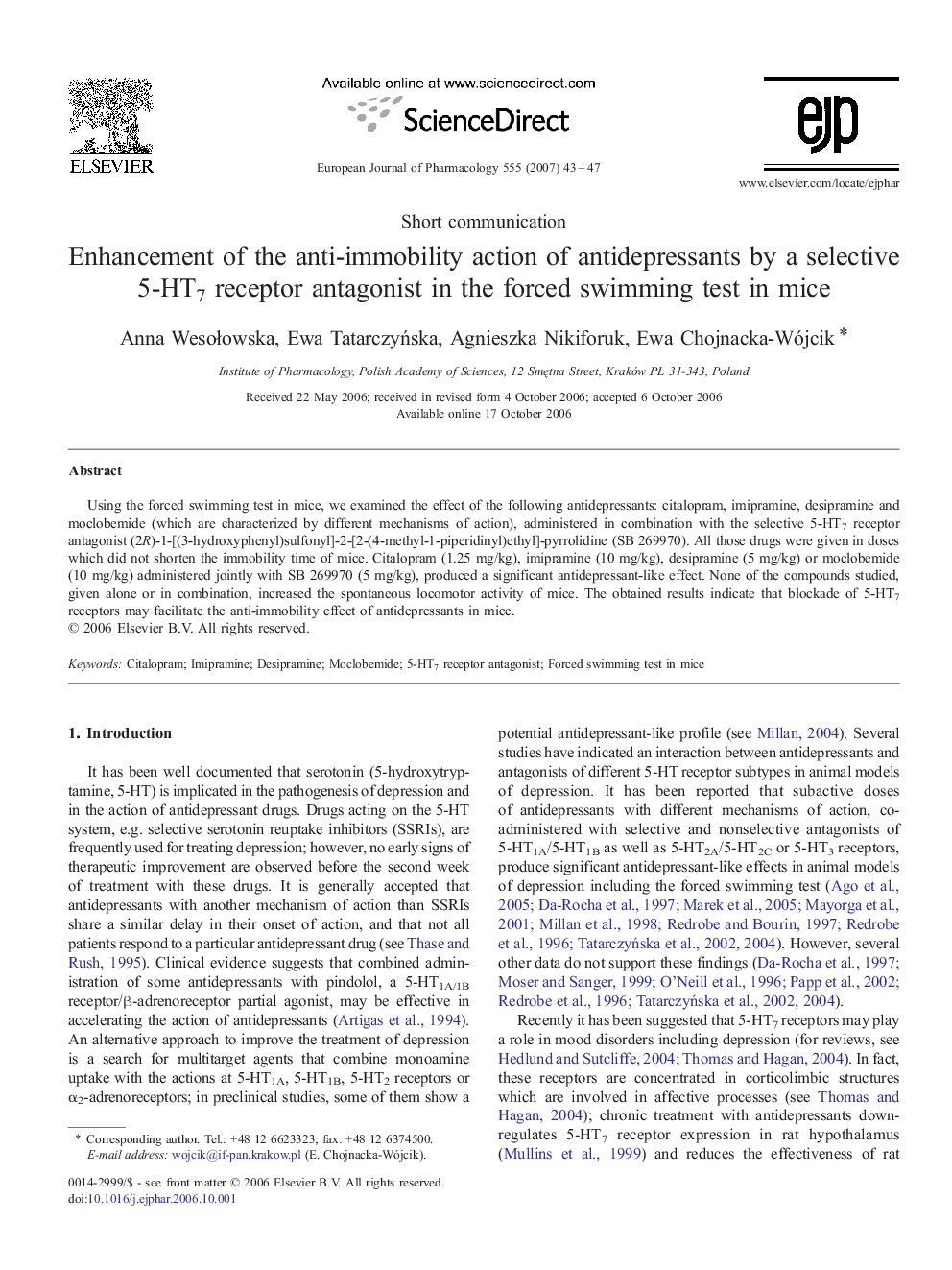| Article ID | Journal | Published Year | Pages | File Type |
|---|---|---|---|---|
| 2536438 | European Journal of Pharmacology | 2007 | 5 Pages |
Abstract
Using the forced swimming test in mice, we examined the effect of the following antidepressants: citalopram, imipramine, desipramine and moclobemide (which are characterized by different mechanisms of action), administered in combination with the selective 5-HT7 receptor antagonist (2R)-1-[(3-hydroxyphenyl)sulfonyl]-2-[2-(4-methyl-1-piperidinyl)ethyl]-pyrrolidine (SB 269970). All those drugs were given in doses which did not shorten the immobility time of mice. Citalopram (1.25Â mg/kg), imipramine (10Â mg/kg), desipramine (5Â mg/kg) or moclobemide (10Â mg/kg) administered jointly with SB 269970 (5Â mg/kg), produced a significant antidepressant-like effect. None of the compounds studied, given alone or in combination, increased the spontaneous locomotor activity of mice. The obtained results indicate that blockade of 5-HT7 receptors may facilitate the anti-immobility effect of antidepressants in mice.
Related Topics
Life Sciences
Neuroscience
Cellular and Molecular Neuroscience
Authors
Anna WesoÅowska, Ewa TatarczyÅska, Agnieszka Nikiforuk, Ewa Chojnacka-Wójcik,
